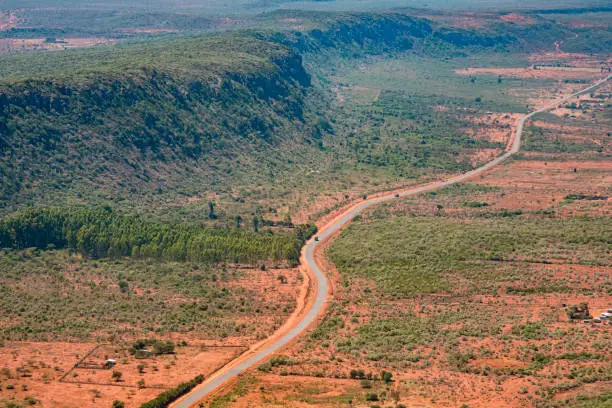
Introduction:
Africa, a continent teeming with natural wonders, holds one of the Earth’s most captivating geological phenomena—the Great Rift Valley. Stretching over 6,000 kilometers (3,700 miles) from the Middle East to Mozambique, this colossal trench is not just a geological marvel but also a cradle of human civilization and biodiversity. Join us on a journey to explore the extraordinary beauty and significance of Africa’s Great Rift Valley.
A Geological Masterpiece:
The Great Rift Valley is a geological masterpiece, a colossal fracture in the Earth’s crust formed over millions of years. It’s the result of the African Plate slowly pulling away from the Arabian Plate, causing the Earth’s surface to crack and create this immense trench. The valley comprises a series of interconnected rifts, each with its unique geological features.
1. Lakes of Life:
One of the most captivating aspects of the Great Rift Valley is the chain of freshwater lakes that grace its floor. These lakes include Lake Victoria, Lake Tanganyika, Lake Malawi, and many others. They are not only breathtakingly beautiful but also support a staggering diversity of wildlife, both above and below the surface.
Lake Victoria, the largest tropical lake in the world, is home to an incredible variety of fish species, including the famous Nile perch. Lake Tanganyika, the second deepest lake globally, hosts unique cichlid fish species found nowhere else on Earth. These lakes are a paradise for birdwatchers, providing habitat for flamingos, herons, and numerous other avian species.
2. Volcanic Wonders:
The Great Rift Valley is also home to some of the planet’s most iconic volcanoes, such as Mount Kilimanjaro and Mount Kenya. These towering peaks punctuate the valley’s landscape, offering adventurers the chance to embark on challenging climbs and witness breathtaking sunrises from their summits.
3. Biodiversity Hotspot:
This geological wonderland isn’t just about rock formations; it’s a hotspot for biodiversity. The varying elevations, climates, and ecosystems along the rift support a remarkable array of wildlife. From the savannahs of the Serengeti to the lush forests of the Virunga Mountains, the region boasts an astounding variety of animals, including lions, elephants, gorillas, and rhinos.
4. Cradle of Humanity:
The Great Rift Valley has another claim to fame—it’s often referred to as the “Cradle of Humanity.” Numerous archaeological discoveries have been made in the region, providing invaluable insights into our evolutionary history. Famous sites like Olduvai Gorge in Tanzania have yielded fossils and ancient tools that date back millions of years, shedding light on the origins of Homo sapiens.
Exploring the Great Rift Valley:
To truly appreciate the wonders of the Great Rift Valley, one must embark on a journey of exploration. Here are some must-visit destinations within the valley:
- Ngorongoro Crater, Tanzania: A UNESCO World Heritage Site, this caldera is a microcosm of African wildlife.
- Rift Valley Lakes, Kenya: Lake Nakuru and Lake Naivasha offer spectacular birdwatching and wildlife viewing.
- Virunga Mountains, Rwanda and Uganda: Home to critically endangered mountain gorillas.
- Olduvai Gorge, Tanzania: A glimpse into our prehistoric past.
Conclusion:
The Great Rift Valley stands as a testament to the profound geological forces that shape our planet. But it’s not just a geological wonder; it’s a living, breathing testament to the incredible biodiversity and human history that have thrived in its embrace. Exploring this African marvel is not just an adventure—it’s a journey through time and a celebration of the natural world’s boundless beauty. Visit the Great Rift Valley, and you’ll find yourself forever captivated by its wonders.


